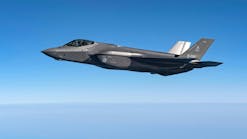Federal aviation officials have dropped plans to consolidate Palm Beach International Airport's long-range radar system with one in Miami, a decision that will eventually let air traffic controllers move into the $19.2 million tower that has been sitting empty since its completion a year ago.
The Federal Aviation Administration announced Thursday that it would keep the radar system, known as Terminal Radar Approach Control, or TRACON, at Palm Beach International.
The ruling marks a victory for PBIA's air traffic controllers, whose national union has been trying to convince the FAA for five years that moving the system to Miami would cause employment and safety problems for Palm Beach International.
"It has been caught up in a little bit of a decision process," said Shane Ahern, president of the local chapter of the National Air Traffic Controllers Association. "This has been a good, collaborative effort."
Construction on PBIA's new control tower was completed in October 2010, but the building has remained vacant while federal officials debated where to put the radar system, which directs planes within about 50 nautical miles of the airport.
Although the disagreement over the radar system has been resolved, it is still unclear exactly when controllers will be able to move into the 231-foot tower, which was commissioned in 2008 and built without a room for the TRACON system.
The FAA plans to ask Congress for money in the 2013 budget to build the additional space. The agency doesn't yet have a price tag, but it is expected to run into the millions.
While the dispute wore on, no equipment was installed in the tower. That process will take 18 to 24 months to complete, the FAA said.
Ahern said installation and construction of the new TRACON facility could be completed in about the same time frame.
U.S. Rep. Alcee Hastings, D-Miramar, who has opposed the consolidation plan since it was announced in 2006, praised the FAA's decision.
"I am truly elated that the FAA has decided to build a TRACON at PBIA and keep those critical safety functions here," Hastings said in a statement. "TRACONs are vitally important to our nation's air transportation network and a dedicated TRACON at PBIA will not only maintain but, in some cases, improve local and regional service as well as enhance system safety by offering additional air traffic control service to South Florida."
Hastings was one of several local lawmakers who joined with air traffic controllers in arguing that the consolidation would cause havoc in the skies if the Miami system went down. If a natural disaster or terrorist attack damaged the Miami radar, they said, controllers in Jacksonville would be responsible for all South Florida airports.
TRACON controllers work on the lower level of PBIA's older, 90-foot tower, where they use radar screens to track aircraft within 50 miles of the airport. The controllers behind the windows at the top of the tower guide takeoffs and landings within 5 miles of the runways.
PBIA officials said Thursday they were unaware of the decision to keep the radar system at the airport.
"We haven't received any notification from the FAA," spokeswoman Casandra Davis said.





